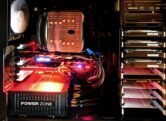Demystifying Neural Networks: How They Power the Future of AI
Table of Contents
- 1. Introduction to Neural Networks
- 2. The Architecture of Neural Networks
- 3. How Neural Networks Learn
- 4. Applications of Neural Networks
- 5. Challenges and Limitations
- 6. Future Trends in Neural Networks
- 7. Q&A: Common Inquiries About Neural Networks
- 8. Resources
1. Introduction to Neural Networks
Neural networks have become a fundamental component in the realm of artificial intelligence (AI) and machine learning. By mimicking the human brain's interconnected neuron structure, they allow machines to learn from data and make predictions or decisions based on it. This section provides an overview of what neural networks are, their significance in AI, and how they differ from traditional programming approaches.
The rise of big data and advancements in computing power have propelled neural networks into the limelight. They are behind many modern applications that leverage AI technologies, including voice assistants, recommendation systems, healthcare diagnostics, and financial forecasting. As we delve deeper, we will explore their architecture, learning processes, applications, challenges, and future trends that shape the landscape of technology.
2. The Architecture of Neural Networks
2.1 Neurons and Layers
A neural network consists of layers of neurons, which are the basic computational units. Each neuron receives inputs, processes them, and produces an output. The organization of neurons into layers—input, hidden, and output—plays a crucial role in how a neural network functions.
Input Layer:
The input layer serves as the entry point for data into the network. Each neuron in this layer represents a feature in the input data. For instance, in an image recognition task, individual pixels can be considered as features.
Hidden Layers:
Between the input and output layers, hidden layers perform various computations and transformations on the input data. The depth (number of hidden layers) can significantly affect the network's performance and its ability to derive complex patterns from data.
Output Layer:
The output layer produces the final result of the network, such as classification labels or numerical predictions. The configuration of the output layer depends on the specific task at hand, such as binary or multi-class classification.
2.2 Activation Functions
Activation functions introduce non-linearity into the network, allowing it to learn more complex patterns. They determine whether a neuron should be activated or not, which ultimately influences the network’s output. Popular activation functions include:
- Sigmoid: Useful for binary classification but suffers from the vanishing gradient problem.
- ReLU (Rectified Linear Unit): Commonly used due to its simplicity and effectiveness at mitigating the vanishing gradient problem.
- Tanh: Scales output to a range of -1 to 1, allowing for faster convergence in training.
2.3 Types of Neural Networks
Neural networks can be classified into various types based on their architecture and the tasks they are designed to perform. Some of the most common types include:
- Feedforward Neural Networks: The most basic type where information moves in one direction, from input to output.
- Convolutional Neural Networks (CNNs): Ideal for image-related tasks due to their ability to capture spatial hierarchies.
- Recurrent Neural Networks (RNNs): Designed for sequential data, such as time series or natural language, with loops in their architecture.
3. How Neural Networks Learn
3.1 Training Process
The training process is central to how neural networks learn from data. It involves feeding the network a set of inputs with corresponding known outputs (labels), allowing it to adjust its internal parameters—weights and biases—through a method called gradient descent.
Dataset Splitting:
Typically, datasets are divided into three parts: training, validation, and test sets. The training set is used to teach the model while the validation set helps in tuning hyperparameters. The test set assesses the model's performance on unseen data.
3.2 Backpropagation
Backpropagation is a supervised learning algorithm used for training neural networks. It involves the following steps:
- Calculating the prediction error using a loss function.
- Calculating gradients of the loss concerning each weight through the chain rule.
- Updating the weights and biases to minimize the loss, thereby improving accuracy.
3.3 Optimization Techniques
Various optimization techniques enhance the training process of neural networks. These include:
- Stochastic Gradient Descent (SGD): Updates weights based on the gradients calculated from each mini-batch of data.
- Adam Optimizer: Combines the advantages of two other extensions of SGD and is widely used due to its adaptive learning rate.
- Learning Rate Scheduling: Dynamically adjusts the learning rate during training to improve convergence.
4. Applications of Neural Networks
4.1 Image Recognition
Neural networks, especially CNNs, have transformed image recognition tasks—from facial recognition in social media to medical image diagnoses. They excel at identifying patterns, shapes, and textures within images.
Case Study: Google Photos
Google Photos utilizes neural networks to categorize images automatically. Users can search for specific objects or people, and the underlying CNNs analyze image contents to provide accurate results, showcasing the practical capabilities of neural networks in real-time applications.
4.2 Natural Language Processing
Neural networks, particularly RNNs and transformers, have significantly advanced natural language processing tasks, such as language translation, sentiment analysis, and chatbots. These networks can understand context and generate human-like responses.
Case Study: OpenAI's GPT-3
GPT-3, developed by OpenAI, is a powerful language model that generates coherent text based on given prompts. Utilizing sophisticated neural architectures, it can perform tasks ranging from writing essays to programming assistance.
4.3 Autonomous Systems
In the domain of autonomous systems, neural networks are vital for decision-making processes. Autonomous vehicles, for example, rely on these networks to understand surroundings and navigate safely.
Case Study: Waymo
Waymo, a self-driving technology company, uses a combination of CNNs and RNNs to process input from sensors like cameras and LiDAR. This approach enables efficient real-time obstacle detection and path planning.
5. Challenges and Limitations
5.1 Data Requirements
One of the primary challenges in deploying neural networks is the substantial amount of data they require for effective training. Accessing high-quality, labeled datasets can be expensive and time-consuming.
5.2 Interpretability
Neural networks are often viewed as “black boxes,” making it challenging to interpret how they arrive at specific conclusions. This lack of transparency can hinder their adoption in critical fields like healthcare and finance.
5.3 Ethical Considerations
The deployment of neural networks raises ethical concerns, particularly concerning bias in training data and the implications of AI decisions on society. Ensuring fairness and accountability is critical for responsible AI development.
6. Future Trends in Neural Networks
6.1 Fine-tuning Models
Fine-tuning pre-trained models is becoming increasingly popular. This method allows developers to adapt existing models to new tasks with relatively small amounts of data, thus saving time and resources.
6.2 Transfer Learning
Transfer learning enables knowledge gained in one task to be applied to a different but related task. This approach is particularly useful when labeled data for the target task is scarce.
6.3 Neuromorphic Computing
Neuromorphic computing—an emerging field—aims to mimic the neural structures and processing patterns of the human brain using specialized hardware. This technology could revolutionize how neural networks operate, improving efficiency and speed.
7. Q&A: Common Inquiries About Neural Networks
Q1: What are neural networks used for?
A1: Neural networks are used for a variety of applications including image recognition, natural language processing, and autonomous systems among others.
Q2: Are neural networks similar to traditional programming?
A2: Unlike traditional programming which follows explicit instructions, neural networks learn patterns and make decisions based on data.
Q3: Can neural networks be explained easily?
A3: While the basic concepts can be explained in simple terms, the deeper workings (the training process, for example) can be complex and often resemble a “black box.”
8. Resources
| Source | Description | Link |
|---|---|---|
| Deep Learning Book | A comprehensive resource on deep learning concepts and algorithms. | Deep Learning Book |
| Coursera – Neural Networks and Deep Learning | Online course providing an introduction to neural networks. | Coursera Course |
| Medium AI Articles | Various articles exploring recent advancements and discussions in AI and neural networks. | Medium AI |
Conclusion
Neural networks are a significant and transformative aspect of artificial intelligence. Their ability to learn hierarchies of features and improve performance with more data makes them highly applicable across various industries. Despite challenges concerning interpretability and ethical considerations, the advancements in this field promise innovative solutions for the future. As technology evolves, understanding the mechanics and implications of neural networks will be crucial for harnessing their full potential.
Disclaimer
The information provided in this article is intended for educational and informational purposes only. While every effort has been made to ensure its accuracy, the field of artificial intelligence is rapidly evolving. Readers are encouraged to conduct their own research and consult relevant experts for specific inquiries related to neural networks and AI.










